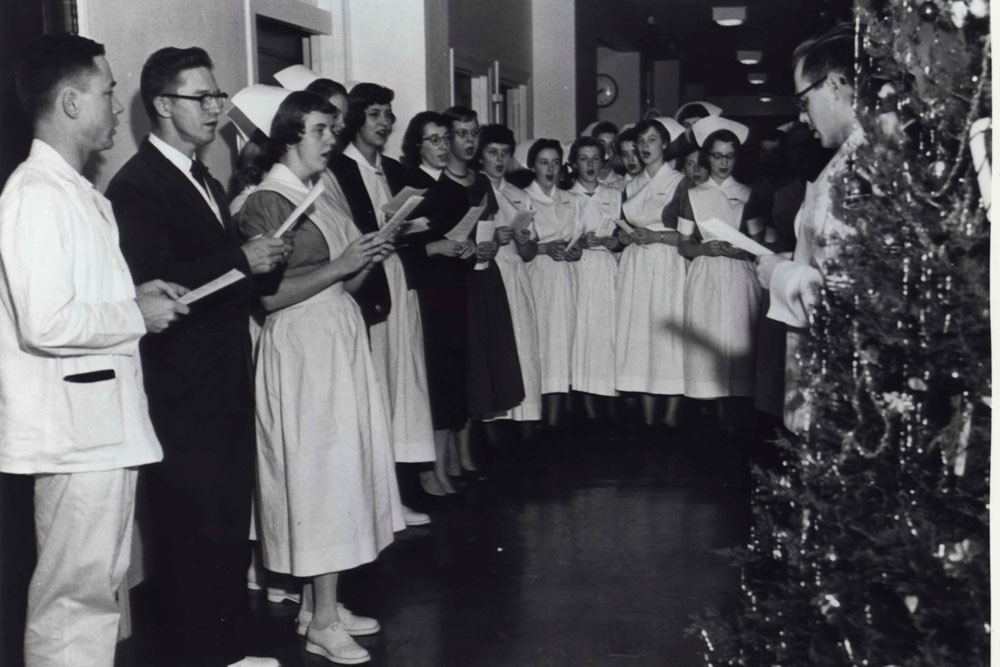All Together Now

A photo from the 1940s of earnest University of Virginia nursing and medical students caroling in an unidentified hallway in the West Complex offers an early glimpse of the kinds of interactions students from across disciplines had. In this era, nursing and medical students rarely met during courses, were educated in silos, and were left to understand the other's role and responsibilities once they were on the job and caring for patients.
A lot has changed since then.
Though the National Academy of Medicine (formerly the Institute of Medicine, or IOM) recognized interprofessional education (IPE) as a key to efficiency in patient care as early as the 1960s, it wasn't until 1999 that it earned its rightful place as a driver of safety, too. The group's 1999's report "To Err is Human" identified dangerous communication gaps among clinicians as a major cause of medical errors.
Of the 400,000 deaths due to medical errors that take place each year, the National Academy of Medicine estimates that 70 percent of them were due to poor communication among members of healthcare teams.
UVA faculty were among the nation's first to ask, and then address the interprofessional mandate: how, exactly, do you teach cohesion? How do you know when you've achieved it? And once a spirit and practice of collaboration exists, how do you measure and strengthen it?
UVA's programs have always been ahead of the curve. The Schools' IPE efforts - driven by Dr. Valentina Brashers through the 1990s, early 2000s, and championed today by Dean Dorrie Fontaine and the School's Center for ASPIRE - continue to flavor both nursing and medical education, with nursing and med students taking courses together, convene for patient simulations and study, interacting at regular intervals to better understand their complementary roles.
And the message is getting through.
In one two year study of 457 UVA nursing and medical students exposed to interprofessional simulations, students' collaboration skills improved 33 to 37 percent. Graders noted a 46 to 49 percent improvement in teamwork. And nearly 100 percent of students "strongly agreed" that the workshop helped them see the value of teams in providing safe and effective patient care (Journal of Interprofessional Care, 30(4), 448-457).
UVA-educated clinicians who've had the benefit of interprofessional learning say its lessons prove sticky. So say graduates Katelyn Rybicki (BSN `11, CNS, `14, DNP `17), Alex Wolf (DNP `16), and Pranay Singha (Medicine `14).
"We all [doctors, nurses, and others] have the skills to contribute to the care and success of the patient," says Rybicki.
"Part of being in a great team is being able to learn from your colleagues," adds Wolf, "and acting on their recommendations."
Says Sinha: "I think I have more perspective about what it's like to be a nurse, and that really helps me not project my frustrations, and make nurses my allies. Which they absolutely are."
+++
Read more about UVA Nursing's IPE in the spring issue of Virginia Nursing Legacy, "Better Together."
This Flashback Friday brought to you by the Bjoring Center for Nursing Historical Inquiry.
